 Porsche: The Classic Era offers something for all Stuttgart enthusiasts and those interested in automotive history.
Porsche: The Classic Era offers something for all Stuttgart enthusiasts and those interested in automotive history.
There are few automobiles in the world as iconic as Porsche’s air-cooled sports cars. For more than 50 years Porsche’s rear-engine wonders set the benchmark for production sports cars and dominated the world’s race courses. From the first Gmund coupe, to the 356 to the timeless 911, this richly illustrated volume tells the full story of Germany’s fabled sports cars.
Automotive writer and photographer Dennis Adler begins the books with the early career of Ferdiand Porsche, detailing the influences and events that set him on the path of automotive-engineering greatness including key stints with Mercedes-Benz, Auto Union, and Volkswagen. From there he details Porsche’s WWII work before moving into the postwar era and the establishment of Porsche as a unique automotive brand.
Adler’s engaging text is accompanied throughout by rare images from Porsche’s historic archive as well as stunning contemporary photos of all the great cars including 356 Carerra, 550 Speedster, 911S, 912, 930 Turbo, 914/6 as well as key racers like the 906, 908, and 935.—Quarto Press Release
Porsche and Hitler
Porsche—The Classic Era answers questions about Porsche’s early history and its involvement with the Third Reich. An entire chapter is devoted to this time period, and this excerpt chronicles a meeting with Hitler and his generals. Porsche very wisely and diplomatically defuses one of the Fuhrer’s more outlandish ideas. Think about design studio meetings where the head floor walker comes in with a “great idea” that is received with blank stares from an overworked staff facing realistic deadlines. The difference here is that if you rubbed Mister Earl the wrong way the worse that could happen is that you were fired. The stakes were much higher with the Wehrmacht. You get the picture.
Excerpt from Porsche—The Classic Era
 An Untenable Position
An Untenable Position
Completely apolitical, the Porsche father and son found themselves in an almost untenable position with Hitler’s reich during the war. The German chancellor liked Ferdinand Porsche, referring to him at the opening of the 1935 German Motor Show as an “outstanding designer.” Hitler also had a great deal of respect for Porsche, and some say the Fuhrer looked up to him with almost father-figure admiration. He requested Porsche’ s counsel and expertise as a designer more than anyone else’s, although this was likely influenced by the variety of military vehicles that could be produced using the Volkswagen’s platform. From 1939 to 1945, Porsche KG was asked to design everything from amphibious VW Schwimmwagens to tanks and tank destroyers. In 1939, Ferdinand Porsche was made manager of the Volkswagen factory; his son-in-law, Anton Piech, become Porsche’s deputy; and Ferry took over management of the Zuffenhausen design office.
Kubelwagen
 Another indication of Hitler’s favoritism was the appointment of Ferdinand Porsche as reich auto designer and a decision to grant the contract for the design of a cross-country vehicle to Porsche KG. The Porsche proposal had, of course, been based on the KdF car that Hitler personally favored. Because of Ferry’s involvement with the project he was exempted from military service, allowing him to continue design and engineering work. The Porsche-designed VW Kubelwagen, or “bucket car,” as the soldiers called it, became the German equivalent of the American Jeep.
Another indication of Hitler’s favoritism was the appointment of Ferdinand Porsche as reich auto designer and a decision to grant the contract for the design of a cross-country vehicle to Porsche KG. The Porsche proposal had, of course, been based on the KdF car that Hitler personally favored. Because of Ferry’s involvement with the project he was exempted from military service, allowing him to continue design and engineering work. The Porsche-designed VW Kubelwagen, or “bucket car,” as the soldiers called it, became the German equivalent of the American Jeep.
Ferry found it ironic that the VW had earned this reputation. He wrote that “the Volkswagen was conceived as a means of mass transport; it was designed with the aim of offering the man on the street a little bit of independence by making it possible for him to afford his own car. With the outbreak of World War II, this aim unfortunately passed completely out of sight. Nevertheless, it was to become a reality after the war when democracy was restored.”
Porsche’s astonishing proposal to Hitler
 It was obvious that Ferdinand Porsche had Hitler’s ear, and you have to wonder how an engineer’s mind functioned in an environment where all reason, if not sanity, had been abandoned. Ferry believed that Hitler had gone mad. He was known to ignore the advice of his generals and, in matters of military vehicle design, the counsel of Ferdinand Porsche as well, demanding new tanks of such massive size that they were impractical. In response to one such request, the elder Porsche made an astonishing proposal to Hitler in the presence of the internationally renowned tank expert General Heinz Guderian: Rather than larger tanks, smaller soldiers should be used, with a maximum height of 5 feet 3 inches, so that smaller, more maneuverable tanks could be built! Ferry attended the meeting and was equally astonished by Hitler’s response. “There’s something in that,” said the Fuhrer with conviction, “and what’s more, small men are more courageous than big ones. Look at Napoleon and Prince Eugene!” Hitler himself was short of stature, and no one was really certain whether Porsche had been serious, but Hitler appeared to have taken it that way. As Ferry wrote years later, “The matter never went any further.” Porsche KG did design the 68-ton Jagdpanzer tank destroyer and, as Hitler had wanted, a land battleship, the biggest tank of World War II, the 180-ton Type 205 Maus. Despite arguments from the Army regarding the impracticality of such an immense tank, Hitler ordered two built and the contract awarded to Porsche. It is believed that both, built in 1944, were captured by the Allies and taken away.
It was obvious that Ferdinand Porsche had Hitler’s ear, and you have to wonder how an engineer’s mind functioned in an environment where all reason, if not sanity, had been abandoned. Ferry believed that Hitler had gone mad. He was known to ignore the advice of his generals and, in matters of military vehicle design, the counsel of Ferdinand Porsche as well, demanding new tanks of such massive size that they were impractical. In response to one such request, the elder Porsche made an astonishing proposal to Hitler in the presence of the internationally renowned tank expert General Heinz Guderian: Rather than larger tanks, smaller soldiers should be used, with a maximum height of 5 feet 3 inches, so that smaller, more maneuverable tanks could be built! Ferry attended the meeting and was equally astonished by Hitler’s response. “There’s something in that,” said the Fuhrer with conviction, “and what’s more, small men are more courageous than big ones. Look at Napoleon and Prince Eugene!” Hitler himself was short of stature, and no one was really certain whether Porsche had been serious, but Hitler appeared to have taken it that way. As Ferry wrote years later, “The matter never went any further.” Porsche KG did design the 68-ton Jagdpanzer tank destroyer and, as Hitler had wanted, a land battleship, the biggest tank of World War II, the 180-ton Type 205 Maus. Despite arguments from the Army regarding the impracticality of such an immense tank, Hitler ordered two built and the contract awarded to Porsche. It is believed that both, built in 1944, were captured by the Allies and taken away.
Neither Ferdinand nor Ferry Porsche was a military man. Both were designers and engineers, sportsmen and dreamers who were suddenly faced with an unwelcome task. The vehicles of war designed by Porsche KG were no less a necessity of the times.
Photos from Porsche—The Classic Era
ABOUT THE AUTHOR
Award-winning author, photographer, and historian Dennis Adler is one of America’s most published automotive authors and historians. He has appeared on Good Morning America, The Today Show, and CBS Sunday Morning. The author of dozens of books on collectible automobiles and historic firearms, as well as a former magazine editor, Adler has had more than 5000 articles and photographs published during his long career.
Published by Quarto (Motorbooks)
Hardcover
304 Pages
ISBN: 9780760351901
Size: 10.75 in x 8.5 in
Published: Sep. 15, 2016

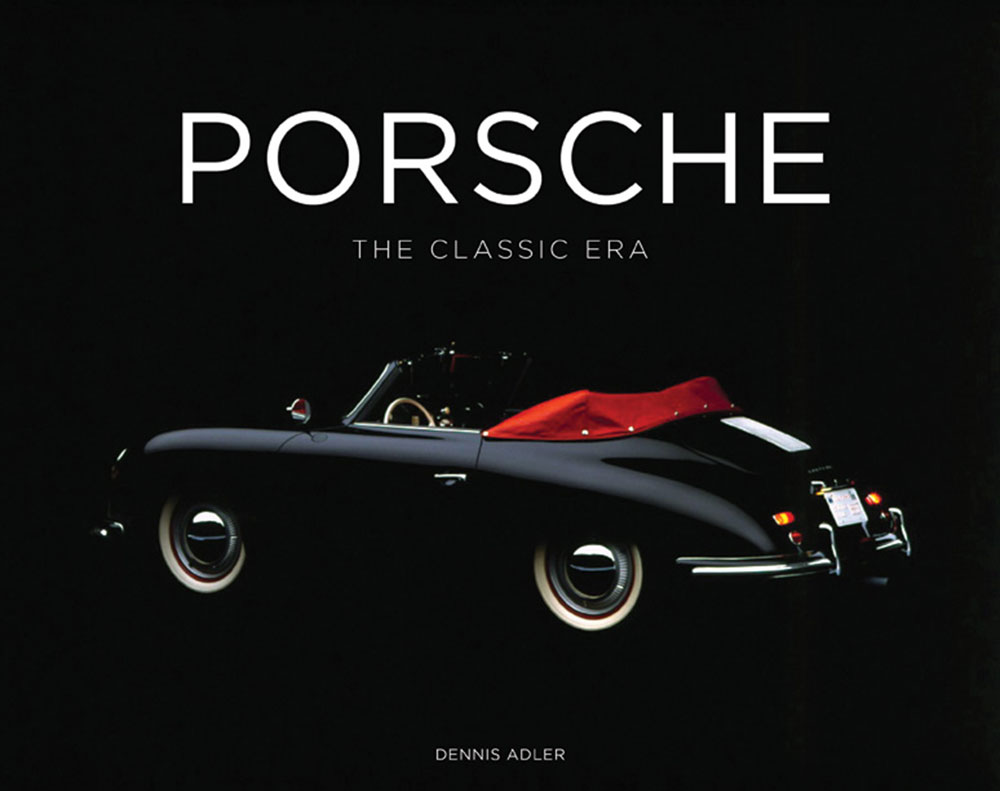
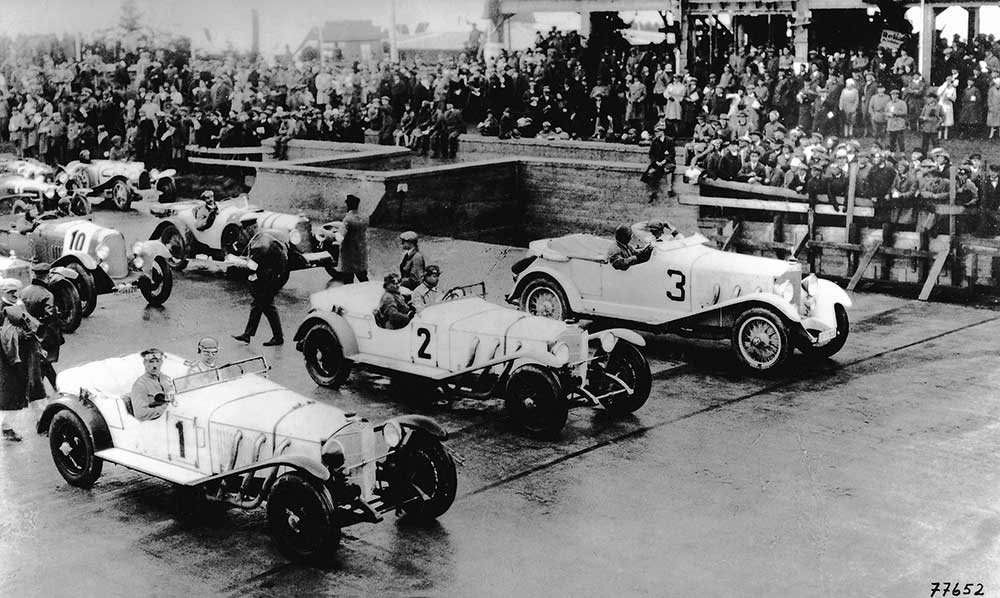
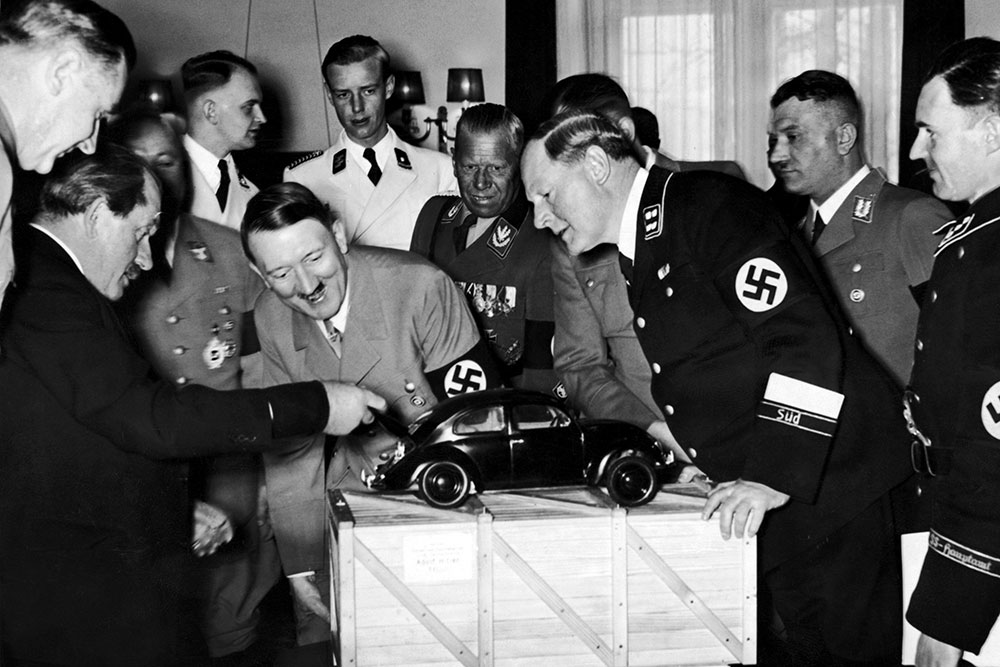
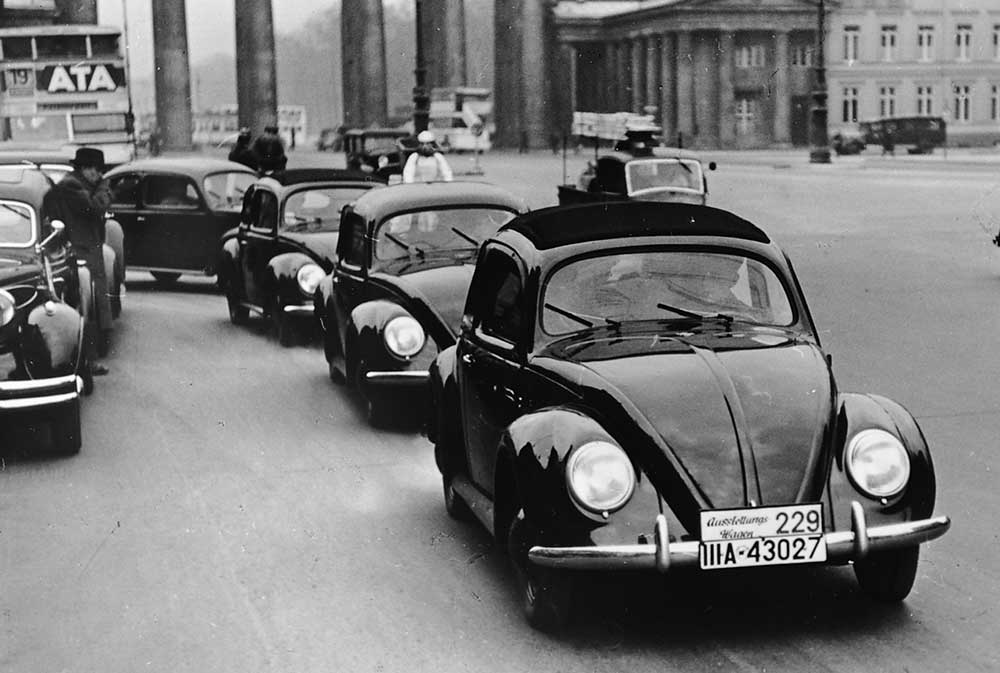
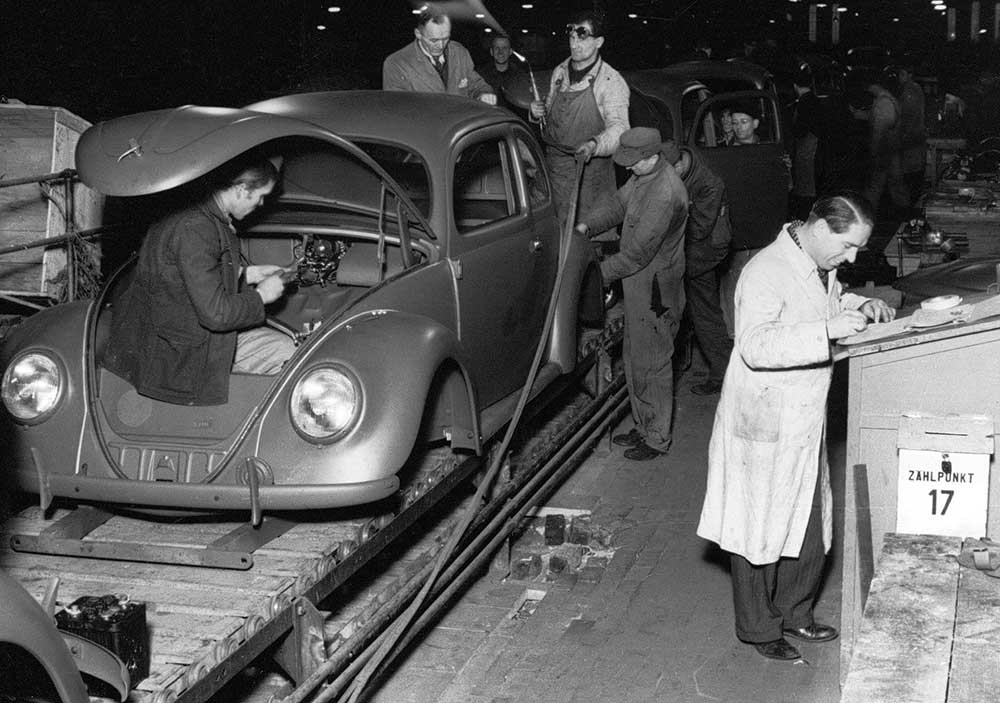
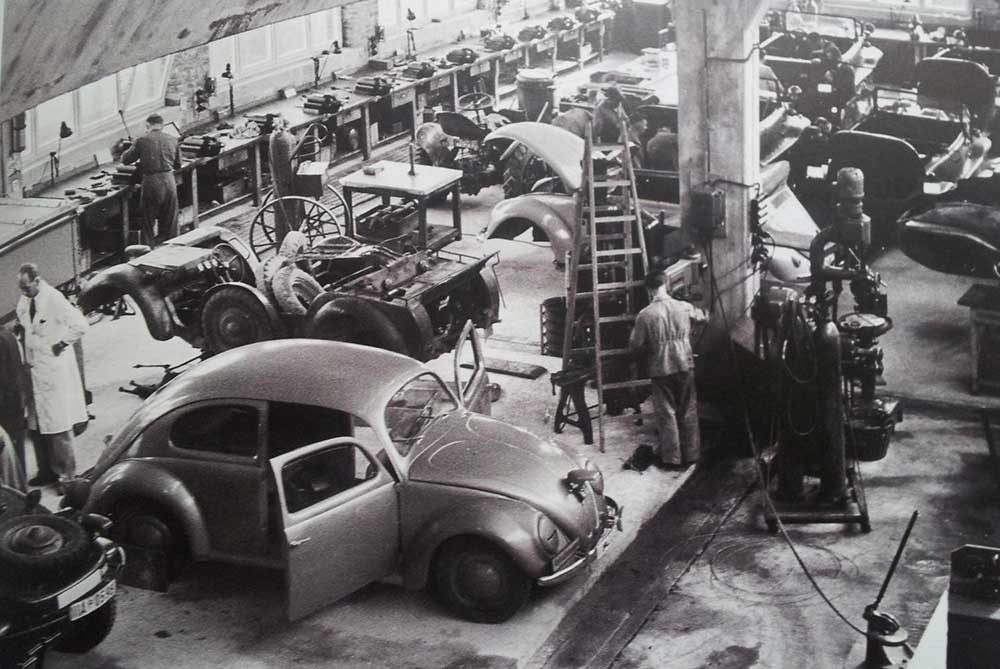
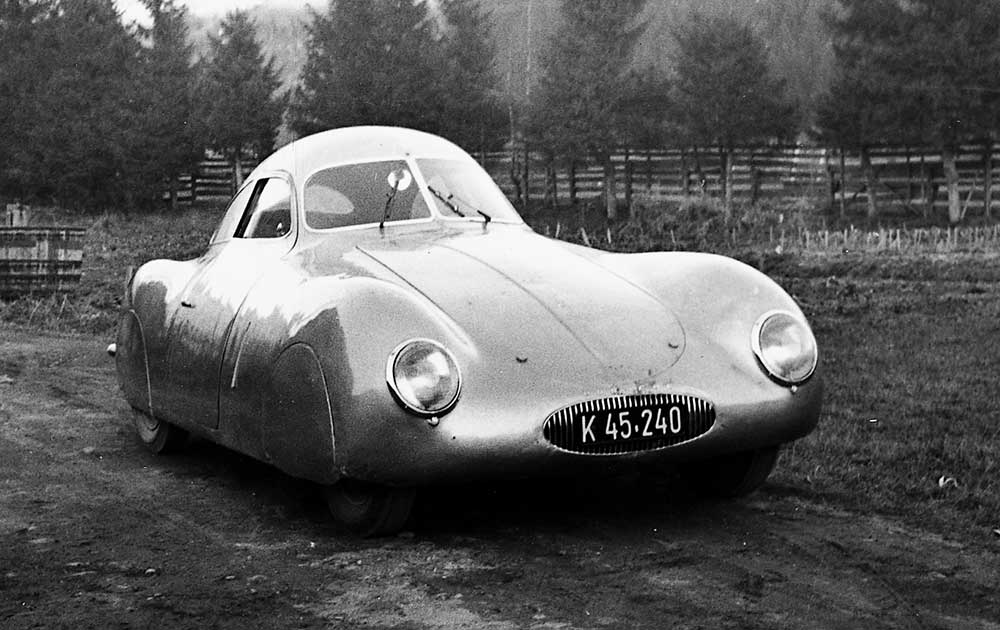
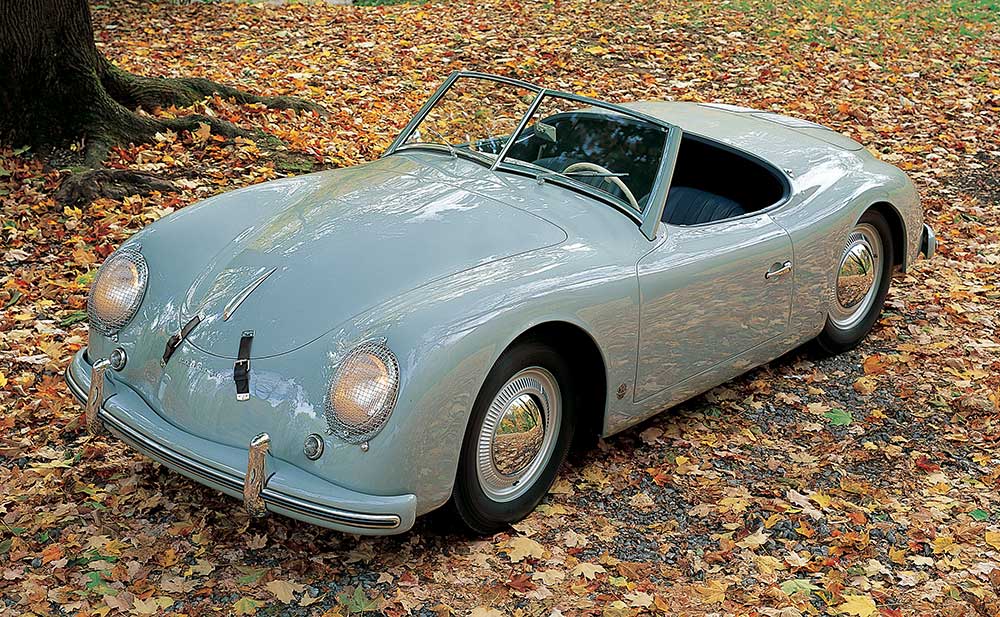

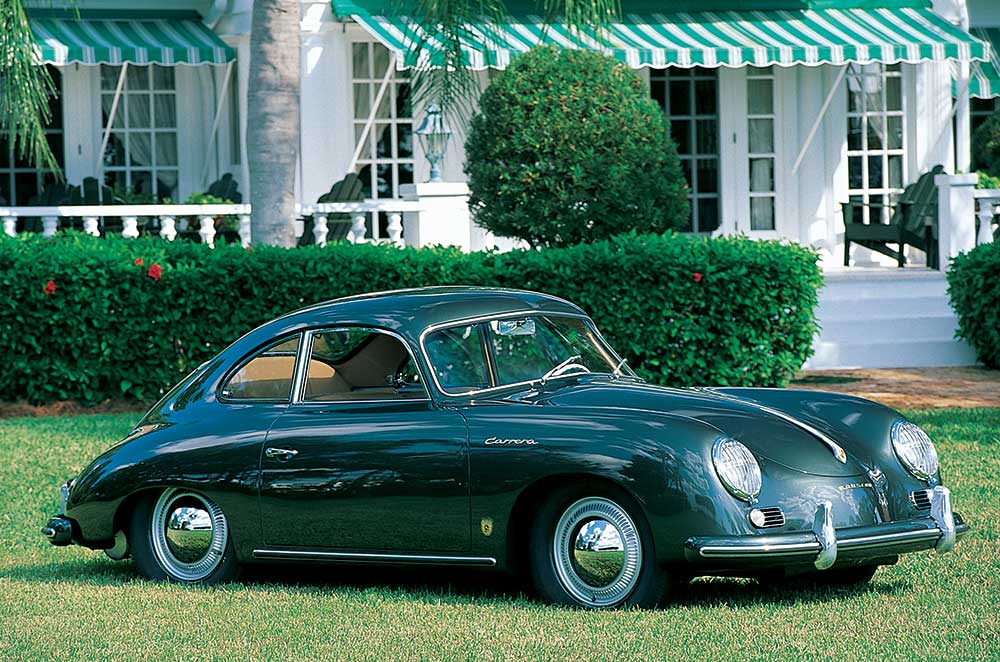
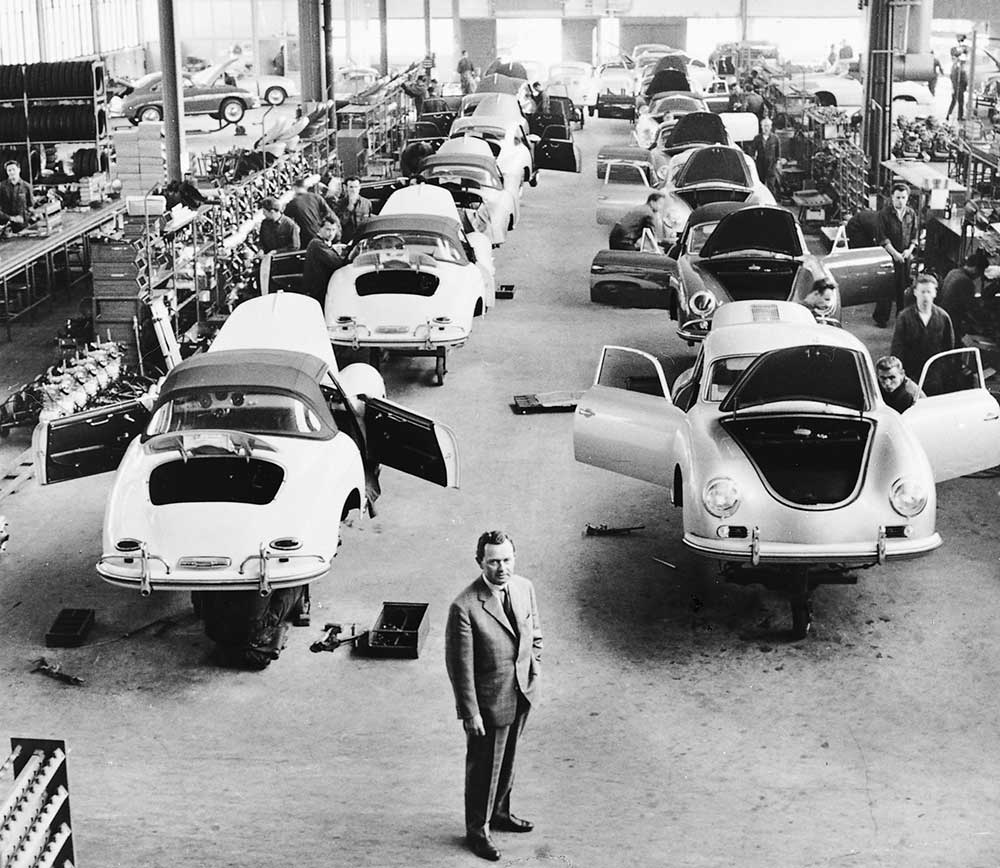
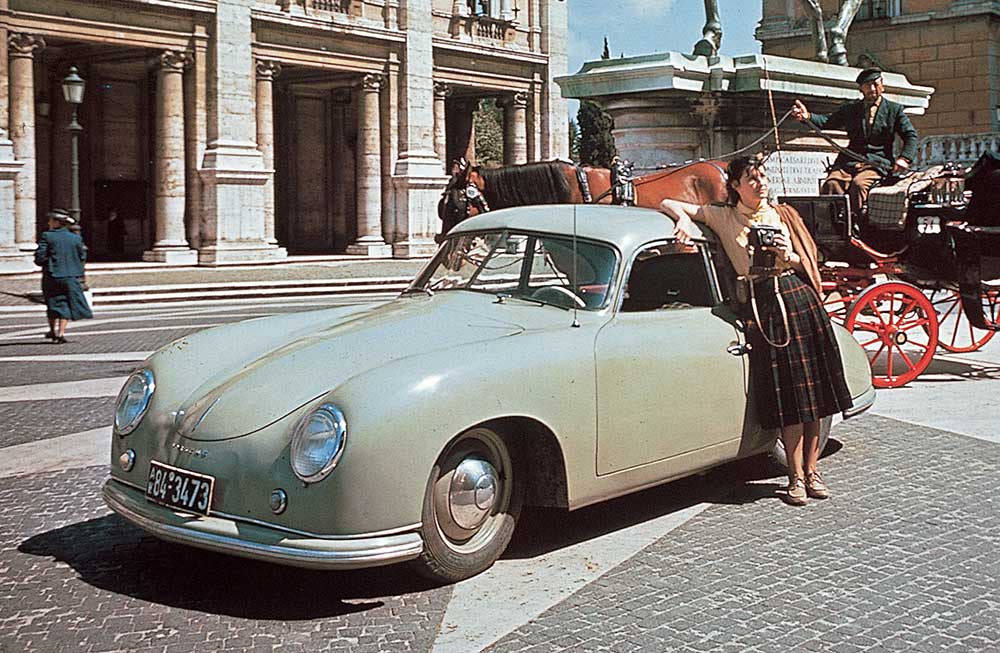
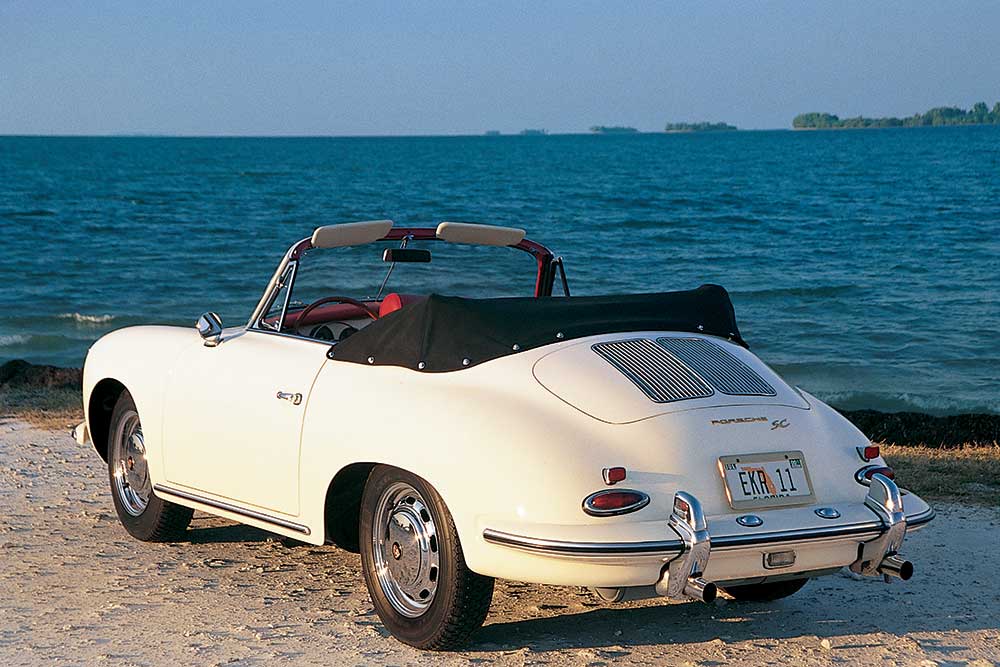
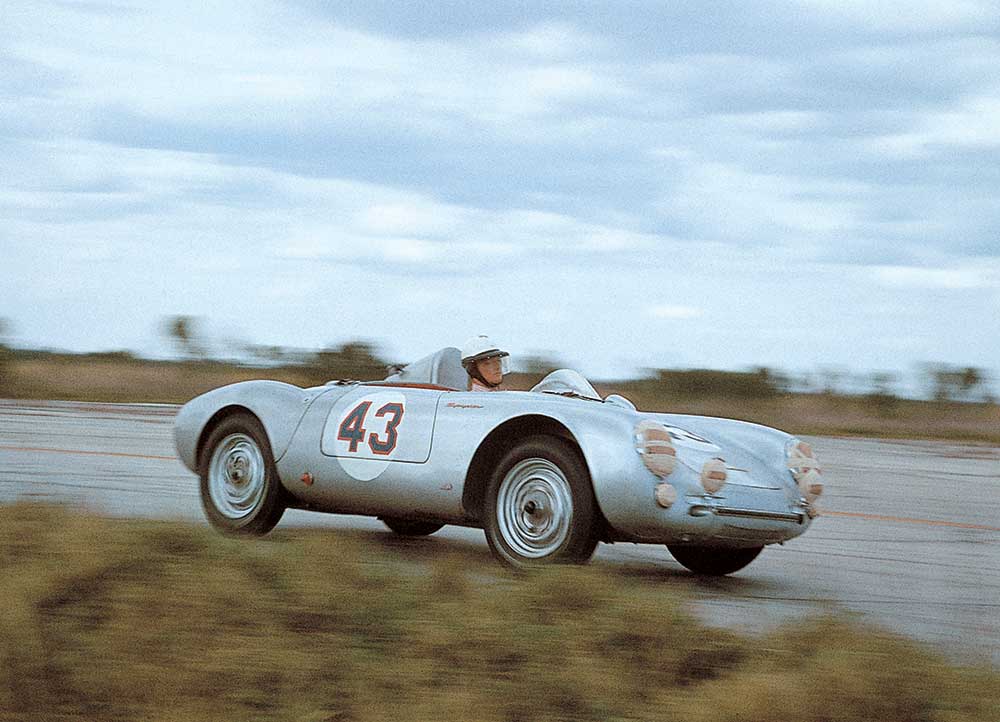
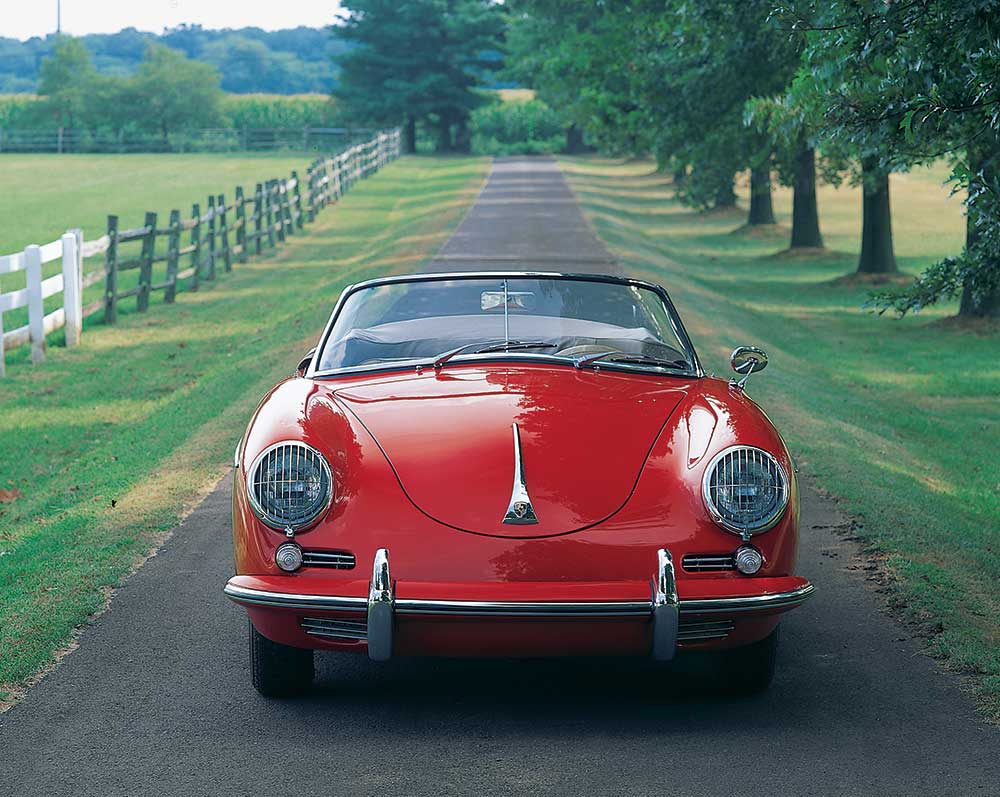
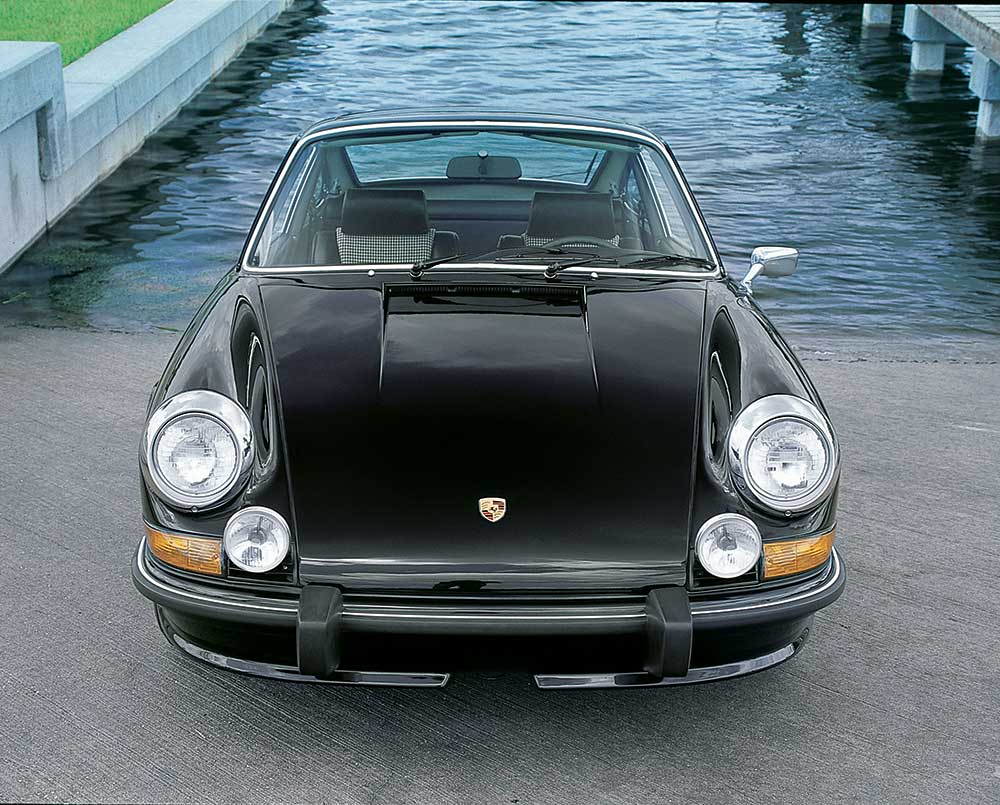
It would be interesting to know whatever became of the black scale model that Porsche is demonstrating to Hitler; close inspection reveals working suspension and an opening engine lid!
This is a well written documentation of Porsche during the war years. Bravo! Many of us were probably unaware of all the different vehicles Porsche designed for the German war effort.
My first sports car was a 1958 Porsche 356 Super Coupe and I loved it, and it made this article even more meaningful for me.
Gary,
Shortly after I was transferred to Overseas Studio, some time in 1967, the Chief Engineer of GM Overseas came through the Studio. Ned Nichols, ex Buick Chief Designer was my boss, I worked for him for 4 1/2 years.
He started telling Ned a story about the Beetle, saying that the German government had come to GMO with a proposal to build the Beetle. Their projected price was so low as to make the venture impossible so it was turned down. The Opel plant in Russelsheim was so large that you could drive a car around on the roads inside of it. The Germans took the plant over and because of its size it became an easy bombing target for bombers on their way back to England with bombs that had not been dropped.
I used to, every Sunday after church, drive by a small plant with the BMW symbol on it, a “Metal Fabrique” shop of some kind. The Opel designers told me that during the war after Opel was taken over by the Nazis they received a very large order to build aircraft engines. They hired a small shop nearby to make strategic small parts. That small shop became so successful that after the war it was able to develop into the BMW that we know today.
Also I was told that after the war the Nazi SS officers spread through post war Germany, many landing in key positions in public relations for VW, BMW and MB. From there they launched industrial espionage efforts that went on for years.
Sorry to digress but seeing the picture of the Beetle brought back the memory.
DICK RUZZIN
My dad bought a ’59 VW, black and luxurious. Big snow storm in Detroit and he and the boss were the only ones to make it into work. His boss had a ’58 VW. I learned to drive stick in my dad’s red ’60 WV. I took it to Ontario beach of Lake Huron, to give it a wash. The waves dug the sand from under it, leaving me stranded. 4 muscle men came over and lifted it out and carried it to shore, ha.
Anyone interested in the real detailed story of the military career of Ferdinand Porsche will enjoy reading my book “Professor Porsche’s Wars.” It covers not only the WW2 years but also Porsche’s entire service to the Military, first Austria-Hungary and then Germany. It’s a fantastic story.
You might also enjoy “Porsche–Origin of the Species”, which explains how and why Porsche became a car manufacturer after WW2. This too is a yarn full of surprises!